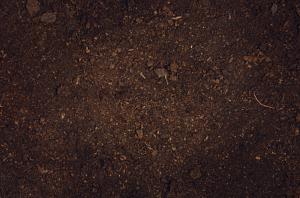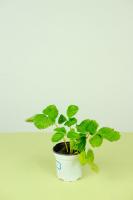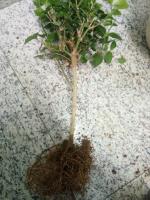Introduction
Tomatoes are a beloved fruit that is used in many dishes around the world. They are easy to grow and provide a bountiful harvest when grown in optimal conditions. One of the most important factors to consider when growing tomatoes is choosing the right fertilizer. In this article, we will explore what makes a good tomato plant fertilizer and which ones are recommended for optimal growth and yield.
What to Look for in a Tomato Plant Fertilizer
When selecting a fertilizer for your tomato plants, it is important to look for a product that is balanced and contains the nutrients that tomatoes need to thrive. The three primary nutrients that tomato plants require are nitrogen, phosphorus, and potassium. Nitrogen is essential for leaf and stem growth, while phosphorus supports root development, flower production, and fruit formation. Potassium helps with overall plant vigor and disease resistance.
Another important consideration is the release method of the fertilizer. There are two main types of fertilizer: slow-release and quick-release. Slow-release fertilizers release nutrients gradually over time and provide sustained nutrition for the plant. Quick-release fertilizers, on the other hand, provide an immediate burst of nutrients to the plant. Both types can be effective, depending on your growing conditions and the needs of your tomato plants.
Recommended Tomato Plant Fertilizers
There are many different types of tomato plant fertilizers available on the market today. Here are some of the best options:
Organic Fertilizers: These are made from natural sources such as compost, manure, or bone meal. They are often slow-release and provide a wide range of nutrients to the plant.
Commercial Fertilizers: These are synthetic fertilizers that typically contain higher levels of nitrogen, phosphorus, and potassium than organic fertilizers. They can be slow-release or quick-release, depending on the product.
Fish Emulsion: This is a liquid fertilizer made from fish waste that is high in nitrogen and phosphorus. It is often used as a foliar spray for quick absorption by the plant.
Blood Meal: This is a dry fertilizer made from the blood of animals that is high in nitrogen. It is typically slow-release and can be used as a soil amendment or for foliar feeding.
Bone Meal: This is a dry fertilizer made from ground-up animal bones that is high in phosphorus. It is often used as a soil amendment for root development.
Conclusion
Choosing the right fertilizer for your tomato plants is an important part of growing a successful crop. Whether you prefer organic or synthetic fertilizers, slow-release or quick-release, there are many great options available to meet the needs of your plants. By understanding the nutrient requirements of tomato plants and selecting a high-quality fertilizer, you can help ensure that your plants reach their full potential and give you a delicious and bountiful harvest.

 how many times do yo...
how many times do yo... how many planted tre...
how many planted tre... how many pine trees ...
how many pine trees ... how many pecan trees...
how many pecan trees... how many plants comp...
how many plants comp... how many plants can ...
how many plants can ... how many plants and ...
how many plants and ... how many pepper plan...
how many pepper plan...






























